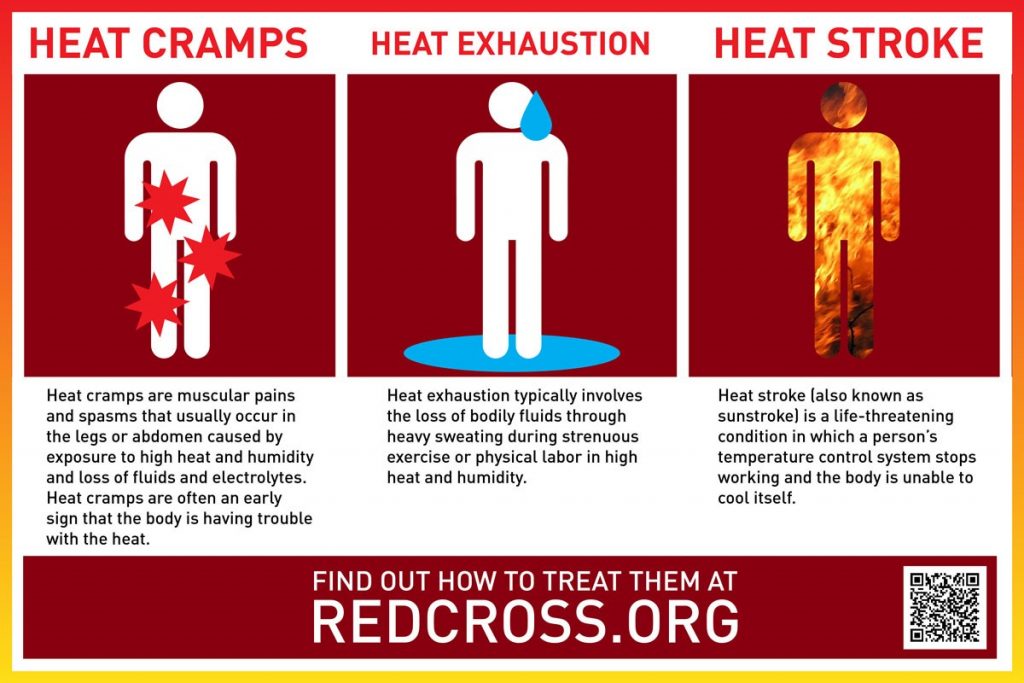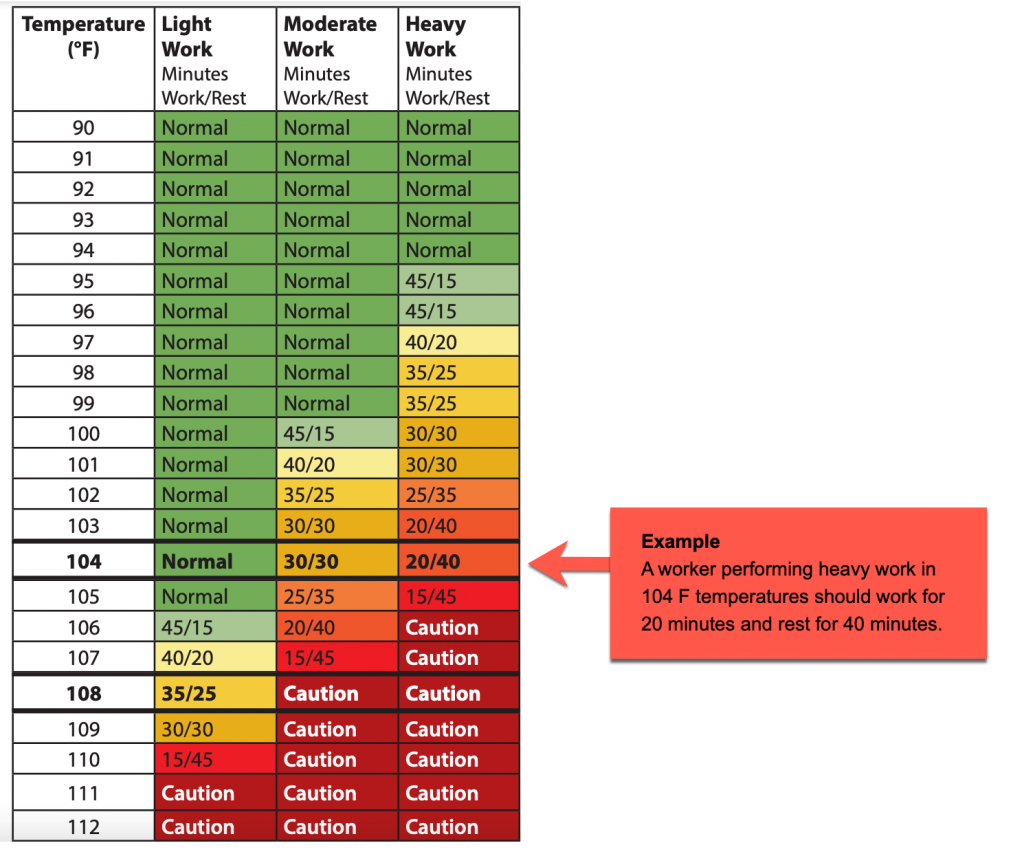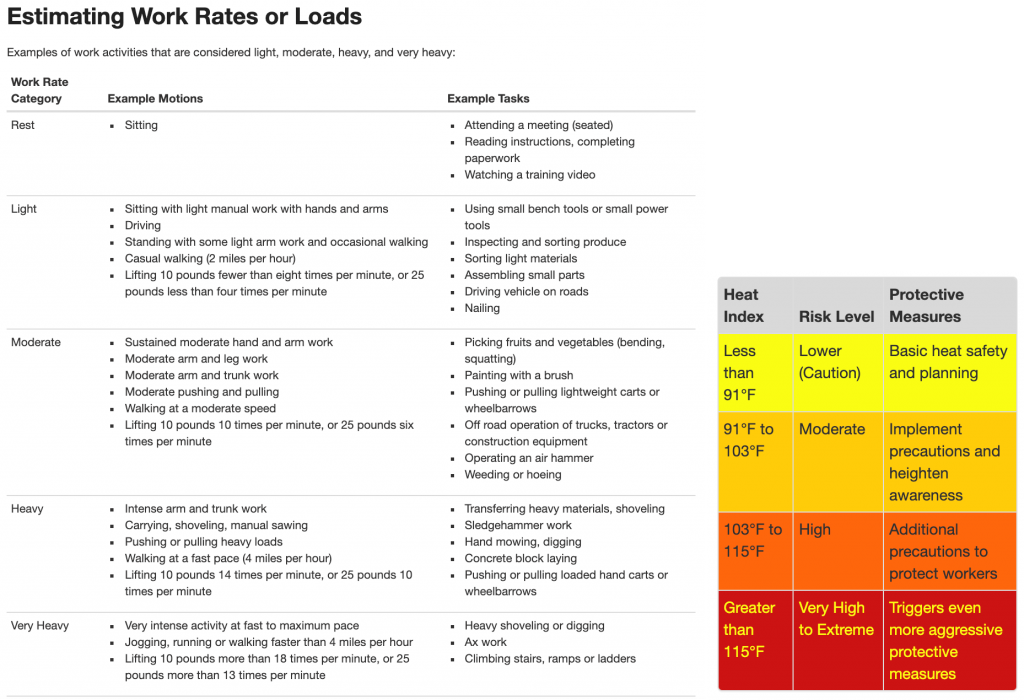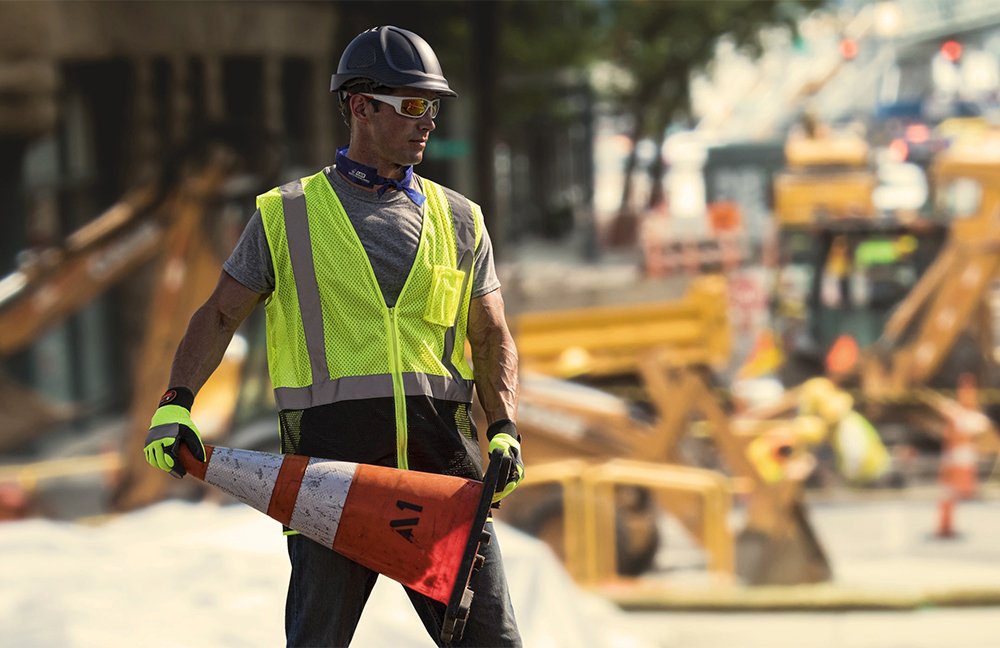It’s that time of year again when hot and humid summer conditions present a unique set of hazards for outdoor workers. Exposure to potentially cancer-causing UV radiation, dehydration, and heat stress, just to name a few, are some of the realities they face.
Industries and the workers most affected by the heat
Climate exposure varies across industries, and not all workers are affected equally. According to the Center for Disease Control (CDC), companies whose workers are most vulnerable to the stress of the summer climate are those that work in agriculture, construction, utilities, and manufacturing.
Extreme exposure to high temperatures and sun diminishes a person’s ability to carry out their daily tasks and induce heat exhaustion or heat stroke. Therefore, those workers face the risk of heat stress because of how physical their jobs often are.
What happens when your body is overheated?
Heatstroke is a life-threatening situation where the body can’t regulate temperature properly. Experts at the Red Cross point out that painful muscle cramps called “heat cramps” are often the first sign of danger, followed by heat exhaustion then heat stroke.

SOURCE: RedCross.org
Prompt treatment usually prevents heat cramps from progressing to heat exhaustion. However, preventing heat stress in the first place is a better way to go.
Water, Rest and Shade
To help those companies and their employees who work outside in the summer avoid heat illnesses, OSHA developed a heat illness prevention campaign that has been a reliable source for over a decade.
Every year during the summer months, this campaign’s central message strives to communicate that the three most important ways to combat heat-related illness come down to water, rest, and shade. By providing workers with these three things, supervisors can significantly decrease the risk of heat illness.
Water: Drink Plenty of Cool Liquids
It may sound obvious but drinking cool water and other hydrating liquids is crucial when the temperatures rise. Cool liquids help regulate your core body temperature and prevent dehydration.
A word of caution, though – think gradually and not immediately with your temperature adjustment. Avoid ice-cold drinks and go for a mildly cool beverage instead if you’re overheated or working in scorching conditions because your body can go into shock with such a sudden temperature change.
Rest: Maintain a Work/Rest Schedule
Because continuous work in the heat is not advisable, the National Institute for Occupational Safety and Health (NIOSH) recommends a work/rest schedule when exposure to heat and hot environments can’t be avoided.
The schedule is based on the assumption that workers are physically fit, well-rested, fully hydrated, under age 40, and the environment has 30% humidity and perceptible air movement.

Source: NIOSH
Shade: Protection from the Sun
Easy access to shade is one of the best ways to protect workers from the sun’s harmful ultraviolet (UV) rays and reduce heat distress. When used with other forms of sun protection, such as protective clothing, hats, sunglasses, and sunscreen, shade becomes an even more powerful method of preventing injury.
NIOSH recommends during periods of high heat and high humidity to avoid direct sunlight when possible and take short breaks in the shade to let the body release some of that extra heat.
OSHA has put together a guide to understand how hot it really is even in the shade and also a guide to exertion levels so employers can gauge what precautions to take and when.

SOURCE: OSHA
Wear Cooling Apparel as part of the strategy
There’s no doubt that adding protective clothing makes workers warmer. However, the right cooling products and workplace protocols that protect workers from the sun can provide relief by helping maintain a healthy body temperature when on the job.
Wearing light, breathable clothing that wicks away sweat and keeps you cool should be part of every company’s summertime worker protection strategy. This means personal protective equipment (PPE) that can accommodate workplace hazards and heat stress.
As we said above, when possible, workers should stay out of the sun during the heat of the day. Whenever they are in the sun, they should wear a lightweight full brim hat or a detachable hard hat brim neck shade at all times.
Suitably rated safety glasses with UV protection are also critical. They’re considered essential PPE to protect the eyes from both the sun and any hazards associated with work conditions. Furthermore, cooling apparel such as cooling bandanas and towels will also help prevent heat build-up.
Stay Cool, Stay Safe
For more heat stress management strategies to try when wearing PPE, download the CDC’s complete heat stress program. And for more PPE options that work for the summer, read more on the Liberty, Glove, and Safety blog or call us with your questions.


